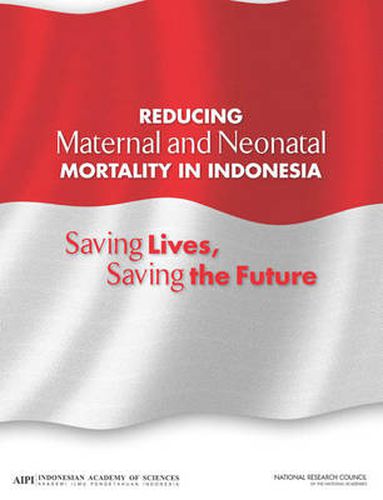Readings Newsletter
Become a Readings Member to make your shopping experience even easier.
Sign in or sign up for free!
You’re not far away from qualifying for FREE standard shipping within Australia
You’ve qualified for FREE standard shipping within Australia
The cart is loading…






The Republic of Indonesia, home to over 240 million people, is the world’s fourth most populous nation. Ethnically, culturally, and economically diverse, the Indonesian people are broadly dispersed across an archipelago of more than 13,000 islands. Rapid urbanization has given rise to one megacity (Jakarta) and to 10 other major metropolitan areas. And yet about half of Indonesians make their homes in rural areas of the country. Indonesia, a signatory to the United Nations Millennium Declaration, has committed to achieving the Millennium Development Goals (MDGs). However, recent estimates suggest that Indonesia will not achieve by the target date of 2015 MDG 4 - reduction by two-thirds of the 1990 under - 5 infant mortality rate (number of children under age 5 who die per 1,000 live births) - and MDG 5 - reduction by three-quarters of the 1990 maternal mortality ratio (number of maternal deaths within 28 days of childbirth in a given year per 100,000 live births). Although much has been achieved, complex and indeed difficult challenges will have to be overcome before maternal and infant mortality are brought into the MDG-prescribed range.
Reducing Maternal and Neonatal Mortality in Indonesia is a joint study by the U.S. National Academy of Sciences and the Indonesian Academy of Sciences that evaluates the quality and consistency of the existing data on maternal and neonatal mortality; devises a strategy to achieve the Millennium Development Goals related to maternal mortality, fetal mortality (stillbirths), and neonatal mortality; and identifies the highest priority interventions and proposes steps toward development of an effective implementation plan. According to the UN Human Development Index (HDI), in 2012 Indonesia ranked 121st out of 185 countries in human development. However, over the last 20 years the rate of improvement in Indonesia\‘s HDI ranking has exceeded the world average. This progress may be attributable in part to the fact that Indonesia has put considerable effort into meeting the MDGs. This report is intended to be a contribution toward achieving the Millennium Development Goals.
$9.00 standard shipping within Australia
FREE standard shipping within Australia for orders over $100.00
Express & International shipping calculated at checkout
The Republic of Indonesia, home to over 240 million people, is the world’s fourth most populous nation. Ethnically, culturally, and economically diverse, the Indonesian people are broadly dispersed across an archipelago of more than 13,000 islands. Rapid urbanization has given rise to one megacity (Jakarta) and to 10 other major metropolitan areas. And yet about half of Indonesians make their homes in rural areas of the country. Indonesia, a signatory to the United Nations Millennium Declaration, has committed to achieving the Millennium Development Goals (MDGs). However, recent estimates suggest that Indonesia will not achieve by the target date of 2015 MDG 4 - reduction by two-thirds of the 1990 under - 5 infant mortality rate (number of children under age 5 who die per 1,000 live births) - and MDG 5 - reduction by three-quarters of the 1990 maternal mortality ratio (number of maternal deaths within 28 days of childbirth in a given year per 100,000 live births). Although much has been achieved, complex and indeed difficult challenges will have to be overcome before maternal and infant mortality are brought into the MDG-prescribed range.
Reducing Maternal and Neonatal Mortality in Indonesia is a joint study by the U.S. National Academy of Sciences and the Indonesian Academy of Sciences that evaluates the quality and consistency of the existing data on maternal and neonatal mortality; devises a strategy to achieve the Millennium Development Goals related to maternal mortality, fetal mortality (stillbirths), and neonatal mortality; and identifies the highest priority interventions and proposes steps toward development of an effective implementation plan. According to the UN Human Development Index (HDI), in 2012 Indonesia ranked 121st out of 185 countries in human development. However, over the last 20 years the rate of improvement in Indonesia\‘s HDI ranking has exceeded the world average. This progress may be attributable in part to the fact that Indonesia has put considerable effort into meeting the MDGs. This report is intended to be a contribution toward achieving the Millennium Development Goals.